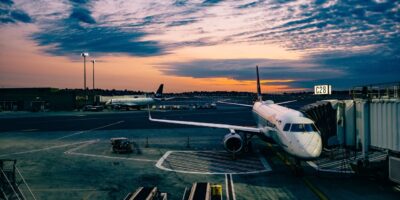MRO Aviation
MRO Aviation
MRO stands for Maintenance, Repair, and Overhaul. It’s a vital part of the aviation industry. Aircraft require regular maintenance to ensure safety and efficiency. The MRO sector covers all activities related to the upkeep of aircraft. This includes everything from routine inspections to major repairs and overhauls.

Maintenance
Maintenance involves routine checks and minor repairs. Scheduled maintenance keeps aircraft in optimal condition. There are different levels of maintenance checks. The most common ones are A, B, C, and D checks.
- A Checks: These are the most frequent and least intrusive. They occur every 400-600 flight hours or every 200-300 cycles, depending on the aircraft. A checks involve basic inspections like fluid level checks and minor visual inspections.
- B Checks: These occur less frequently, around every 6-8 months. B checks are more detailed than A checks and include more in-depth inspections of the aircraft’s components.
- C Checks: These occur roughly every 20-24 months. C checks involve detailed inspections and some disassembly to access parts not typically visible. These checks can take several weeks to complete.
- D Checks: These are the most comprehensive and time-consuming. They occur every 6-10 years. D checks involve a complete teardown of the aircraft. All systems and components are inspected, repaired, or replaced as needed. D checks can take several months and are very costly.
Repair
Repairs address any issues found during inspections or operations. Aircraft components can suffer from wear and tear or other damages. Quick and effective repairs are crucial. The MRO industry ensures that repairs meet safety standards.
Technicians use advanced diagnostic tools to identify problems. Repairs might involve fixing or replacing parts. Specialists for different systems, such as avionics, hydraulics, and structures, handle the tasks. Ensuring a quick turnaround is vital to minimize aircraft downtime.
Overhaul
Overhaul processes restore aircraft components to like-new condition. This often involves complete disassembly, cleaning, inspecting, and reassembling components. Overhauling ensures reliability and compliance with safety regulations.
Engines and landing gear are common overhaul subjects. These critical components undergo rigorous testing. Each part is meticulously examined and refurbished. Overhauls extend the service life of high-value components.
Technological Advances
The MRO industry is continuously evolving. New technologies improve efficiency and accuracy. Digital tools and automation play a large role. Condition-based maintenance uses real-time data from aircraft sensors. This allows for predictive maintenance, targeting potential issues before they become severe.
3D printing is another innovation. It allows for on-demand production of replacement parts. This reduces lead times and inventory costs. Drones are being tested for visual inspections. They can quickly and safely inspect areas that are hard to reach.
Regulations and Standards
Strict regulations govern the MRO industry. Organizations like the Federal Aviation Administration (FAA) in the US and the European Union Aviation Safety Agency (EASA) set standards. Compliance with these regulations is mandatory.
Regulatory bodies conduct regular audits of MRO facilities. Certification requirements ensure that technicians are properly trained. Continuous education and training are essential. The goal is to maintain the highest safety standards.
Economic Impact
The MRO sector significantly impacts the global economy. It supports thousands of jobs worldwide. Skilled technicians, engineers, and support staff are in demand. MRO facilities generate revenue through service contracts.
Airlines rely on this sector to keep their fleets operational. Efficient MRO services reduce downtime, saving airlines significant costs. The industry also supports secondary markets, including parts manufacturers and suppliers.
Environmental Considerations
Sustainability is an increasing focus in the MRO industry. Efforts to minimize the environmental impact include reducing waste and emissions. Recycling materials and optimizing resource use are key strategies.
Newer aircraft are designed with easier maintenance in mind. This reduces the amount of hazardous materials used. Eco-friendly practices benefit both the environment and the bottom line.
Looking Ahead
The future of MRO aviation looks promising with ongoing innovations. Continued advancements will lead to more efficient and sustainable practices. The sector will likely see increased integration of AI and machine learning. These technologies will further enhance predictive maintenance.
Collaboration between airlines and MRO providers will grow. Shared data and resources can improve overall industry standards. As air traffic increases, the demand for reliable MRO services will also rise. The industry is poised to meet these challenges with innovation and resilience.


